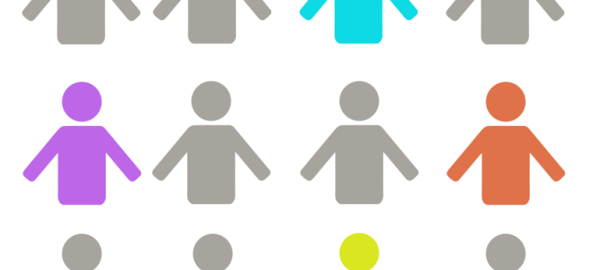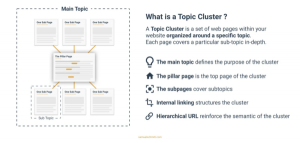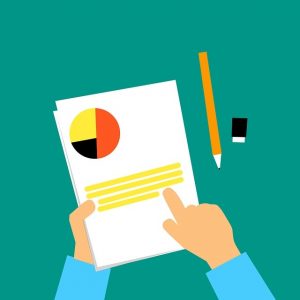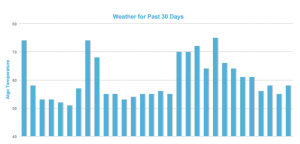By Natalie Issa, Published October 29, 2014
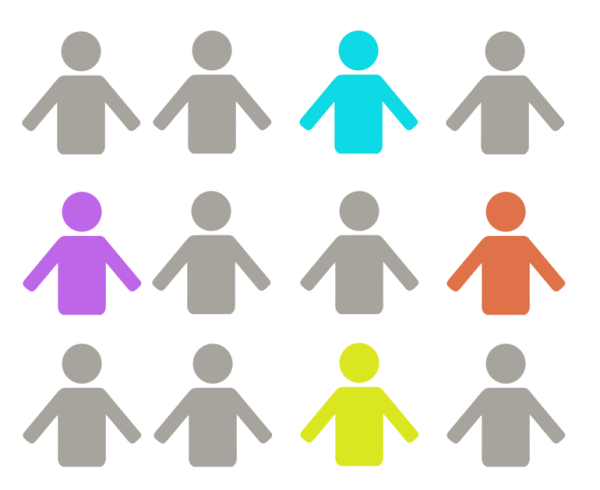
What do companies like Netflix and Amazon have in common?
They understand the power of data-driven personalization. These companies know that customers have come to expect relevant, tailored experiences, and that delivering on this brings increased customer acquisition and loyalty.
Take Co-operative Travel as an example. The company has seen a 217% increase in revenue since it implemented personalization on its website. Similarly, Iron Mountain personalized content based on company size and location and saw a 219% increase in new leads.
According to Econsultancy, 74% of marketers say they know personalization increases customer engagement, but only 19% actually use it.
This means implementing personalization strategies can potentially put you ahead of the pack. Let’s take a closer look.
Data Is the Foundation of Personalization
We’ve all had a disjointed and inconsistent experience with a company at one point or another. Whether it was requiring you to re-enter your information countless times or being marketed irrelevant products and content, we all know how frustrating and time consuming it can be.
So how do companies avoid these pitfalls and create effective personalized experiences?
It all starts with data.
More specifically, complete and comprehensive data that reflects the entire customer lifecycle and customer interactions from all touchpoints. This means companies need to track every interaction a customer has with them, such as:
- How the customer uses the product
- Which emails a customer opens
- When a customer contacts support
- If a customer engages in a live chat
Having a complete set of data is the foundation of effective personalization because it enables you to see the whole picture.
For example, complete data sets that span touchpoints help you avoid redundancy. If I’ve sent a piece of content to a prospect via email and they have clicked on it (and presumably read it), then I don’t want to continue pushing this same content at the prospect when they visit my website.
It would make more sense to display a different piece of content that is related and will help move the prospect through the funnel. Because I’m tracking which content the customer engaged with via email, I can better personalize the experience on my website.
Segmentation for Effective Personalization
In addition to complete data, identifying your key target segments and audiences is crucial for effective personalization. You will need to understand your segments’ needs and how to market to each one.
For example, an airline may want to personalize content for users based on which flights they are interested in. There are a number of ways to do this.
The airline could simply define the segment as “customers who searched for flights to London”. Or, the airline could define it based on the user’s engagement across touchpoints, rather than just the on-site searches. In this case, the airline would filter “customers who searched for flights to London and opened a London promotional email”.
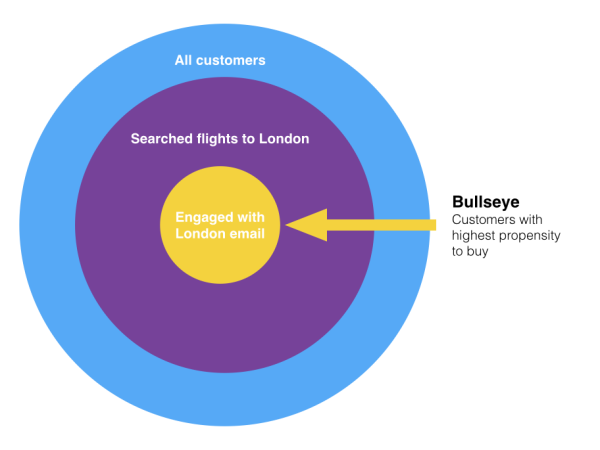
Now the airline has identified the customers with a much higher propensity to buy – as evidenced by their engagement with a related email offer – where personalized content is more likely to effectively lead to a purchase. The more complete data set you have, the more refined segments you can build.
Alice’s Personalized Experience
Let’s take a look at how a new customer, Alice, may experience data-driven personalization throughout her customer journey. We’re going to use Tesla Motors as the example company.
Stage 1: Personalization based on campaigns
Alice receives an email from Tesla about their new Model S. She opens the email and clicks the link. Alice explores the Model S on the website and builds out her car, choosing the color and wheels. Later, Alice is retargeted with ads displaying the Model S with the color and wheels she had chosen. Next time Alice goes to the site, the Model S in her selected color and wheels is displayed, front and center on the homepage.
The retailer knows Alice was interested in the Model S, so personalizing based on the offering and her exact preferences is a way to market to her on the site. Personalization can make your campaigns more effective by allowing you to leverage them throughout the customer experience, ultimately stretching the impact you get from each campaign dollar spent.
Try it yourself: Create a module on your homepage that displays personalized content for a user based on which campaign or referrer brought them to you.
Stage 2: Improve lead nurturing
The following week, Alice still hasn’t requested a test drive, but she has clearly been quite engaged with the Model S, so she may need more information. When Alice visits the website, she’s shown a download providing more detailed information about the Model S.
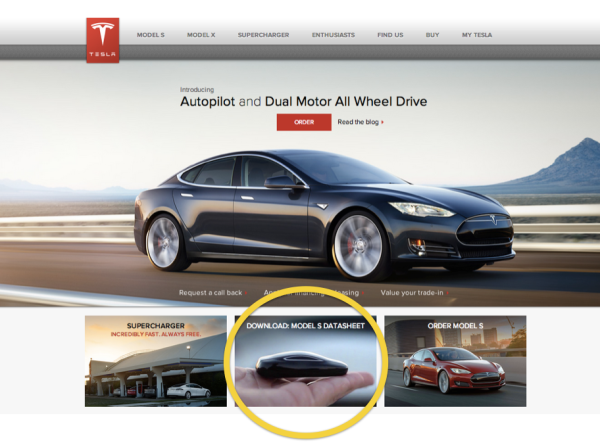
This type of content is dependent on a customer’s lifecycle stage and wouldn’t be appropriate for a brand new top of the funnel lead. Since we know Alice has demonstrated interest through her previous engagements with Tesla, it makes sense to provide this content to her at this point in order to help with her decision process.
Try it yourself: Offer different content downloads to prospects based on their lifecycle stage.
Stage 3: Prompt customers to take action via personalization
A few days later, Alice comes back to the site and continues to browse the Model S. At this point, Alice is shown an offer for a reduced down payment if she books a test drive today.
With her initial questions answered thanks to Stage 2, and this motivating offer, Alice finally pulls the trigger and requests a test drive.
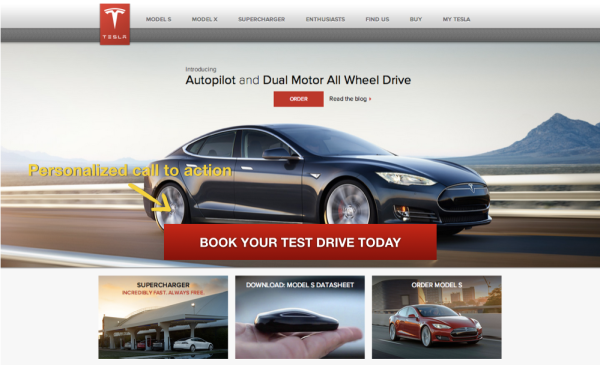
Displaying the right message, to the right customer, at the right time, is a pillar of good marketing. Personalization enables you to leverage your data to do this, and ultimately get customers to take action.
Try it yourself: Offer highly engaged customers a compelling promotion in the moments when they are most likely to buy, such as immediately after a free trial ends.
Stage 4: Higher customer retention and loyalty
Alice visited the dealership and leased the car. She’s now a customer and Tesla wants to keep it that way. Although customer retention isn’t always as sexy as customer acquisition, it’s equally important. Remember, it’s 5 times more expensive to acquire new customers than it is to retain existing ones.
Now when Alice goes to the website, Tesla displays personalized content about her Model S. Alice is offered downloads that are relevant to her specific usage of the car. For example, Alice recently took a few road trips from San Francisco to Las Vegas, so she sees content about caring for her Tesla when driving long distances.
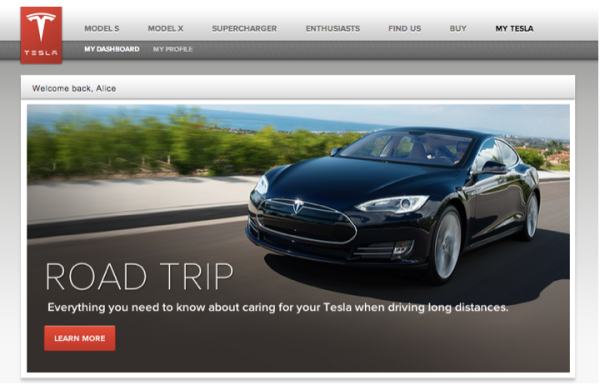
And when Alice’s lease is coming to an end, and she’s likely researching her next car, she starts to see marketing content about the new models. Since Alice has taken a lot of long trips, messaging around more powerful batteries is highlighted for her.
Personalization is a great way to build relationships with customers and ultimately retain them longer. It also gives you the opportunity to more effectively upsell or renew their business when the time comes.
Try it yourself: Help your existing customers get more value out of your product by providing tailored content based on their usage and engagement.
Enter Woopra + Optimizely
Creating a personalized experience like Alice’s may sound like a daunting task, but we have good news.
Optimizely and Woopra have partnered to make data-driven personalization simple and code-free.
With the integration, companies can now leverage their complete data set to create personalized experiences. The integration enables you to sync segments in Woopra with Optimizely’s Audiences, in complete real-time.
Start personalizing your customer experiences with the new Woopra and Optimizely integration.
Business Articles | Business 2 Community
(523)
